Lampris guttatus
North Coast (Oregon Border to Point Arena)
North Central Coast (South of Point Arena to Half Moon Bay)
Central Coast (South of Half Moon Bay to Point Conception)
Santa Barbara (Point Conception to Point Dume)
South Coast (Point Dume to Mexico border)
Firm fish
Oily fish
Wild caught
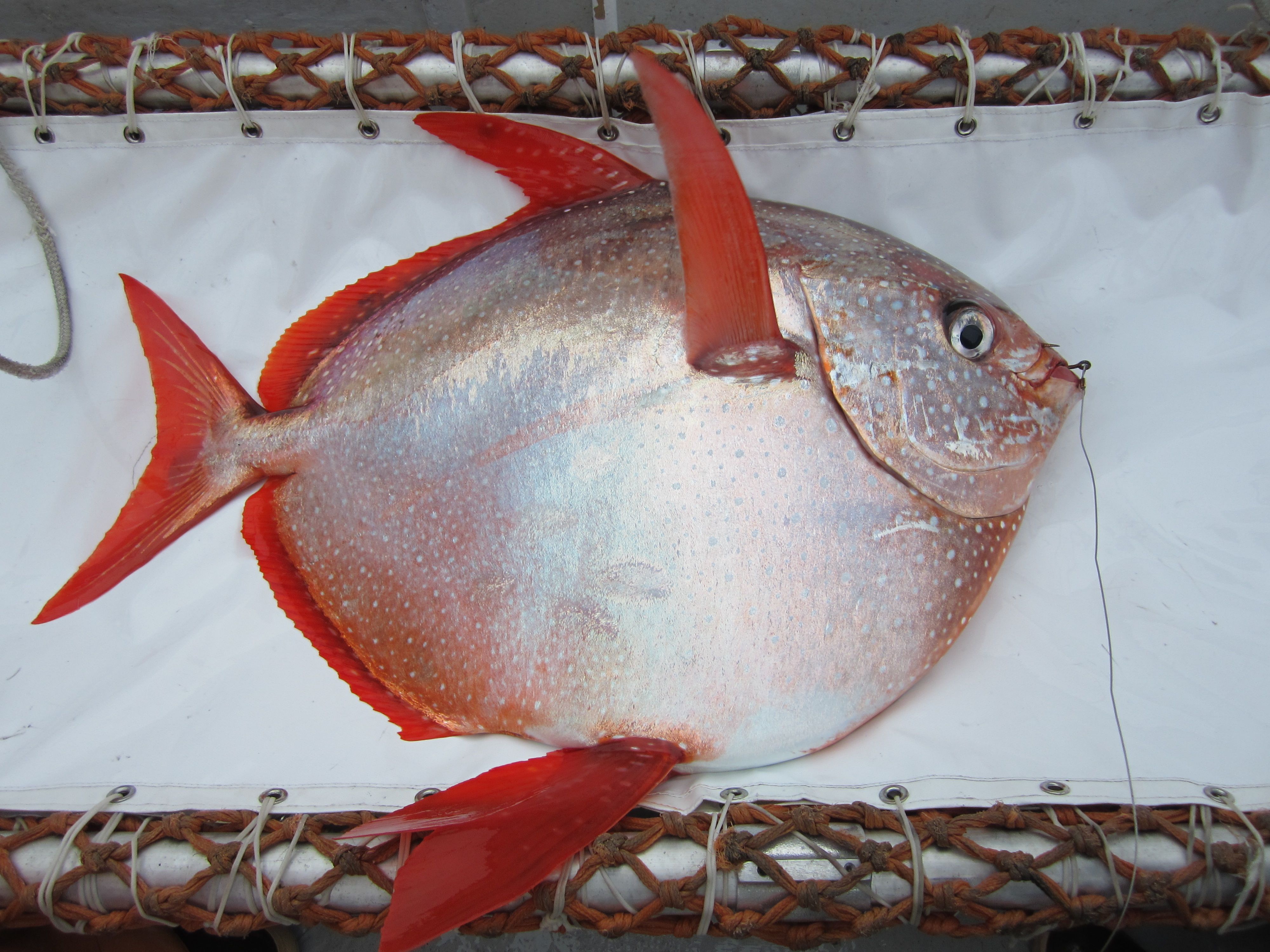
The Science
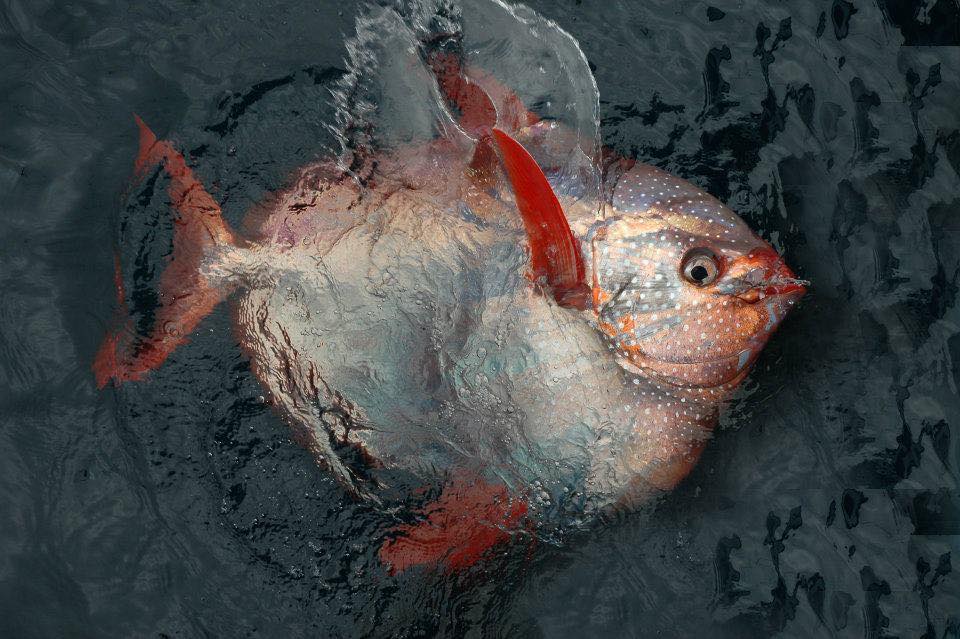
Taxonomic description
- Has a silvery upper body, bright red with white spots towards its belly, scarlet fins and edge of tail, and large, gold eyes. [1]
- Body shape is thin and round, and averages 43 kg (100 lbs), and is about 1 m (3 ft) long. [1]
Distribution
- Found worldwide, in tropical to temperate waters from Gulf of Alaska to Southern California in the eastern Pacific, from the Grand Banks to Argentina and less commonly in the Mediterranean in the western Atlantic, from Norway and Greenland to Senegal in the eastern Atlantic. [6,10]
Life history
- Life span is unknown, estimated to live to about six years old (from those caught). [1]
- Juveniles are defined as individuals up to 20.3 cm (8 in) in length while adults are those greater than 104.1 cm (41 in) because the exact size and age at maturity is unknown. [6]
- Opah spawns in warmer pelagic waters throughout the year, and spawns more seasonally in cooler waters. [1]
Habitat
- Opah at each life stage can live in a different part of the water column, occurring from the sea surface to a depth of 512 meters (1,680 feet ) and is able to forage of depth of about 500 m (1640 feet). [6]
- Diet consists mainly of fish, krill, squid. [4]
- Predators of opah are mainly humans, great white sharks, and mako sharks. [4]
The Fishery
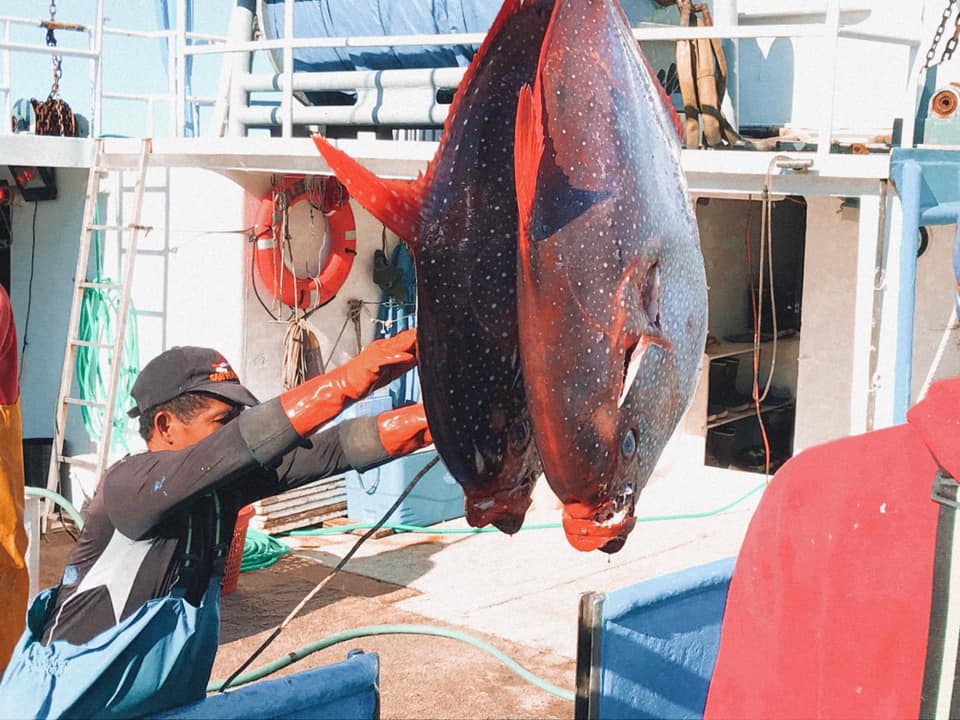
Seasonal availability
- Usually caught year-round with a trending peak mainly during April-August over the last decade. [6,7]
Regulatory and managing authority
- Along the Pacific West Coast, the fishery is overseen by NOAA fisheries and, as established by the Magnuson-Stevens Act, the Pacific Fishery Management Council through the West Coast Highly Migratory Species Fisheries Management Plan. [3,8]
- As established by the Marine Life Management Act, the California Department of Fish and Wildlife (CDFW) collects data on this fishery through the Pelagic Fisheries Ecosystems Program. [15,16]
Potential ecosystem impacts
- Typically fished by longline or caught incidentally by gillnets. [1]
- These forms of fishing rarely contact ocean floor, so habitats are minimally impacted. [1]
- Bycatch is minimized through gear restrictions. [1]
- There is little population data on opah, but the population is assumed to be stable. More information is needed to better inform management decisions. [1]
The Seafood
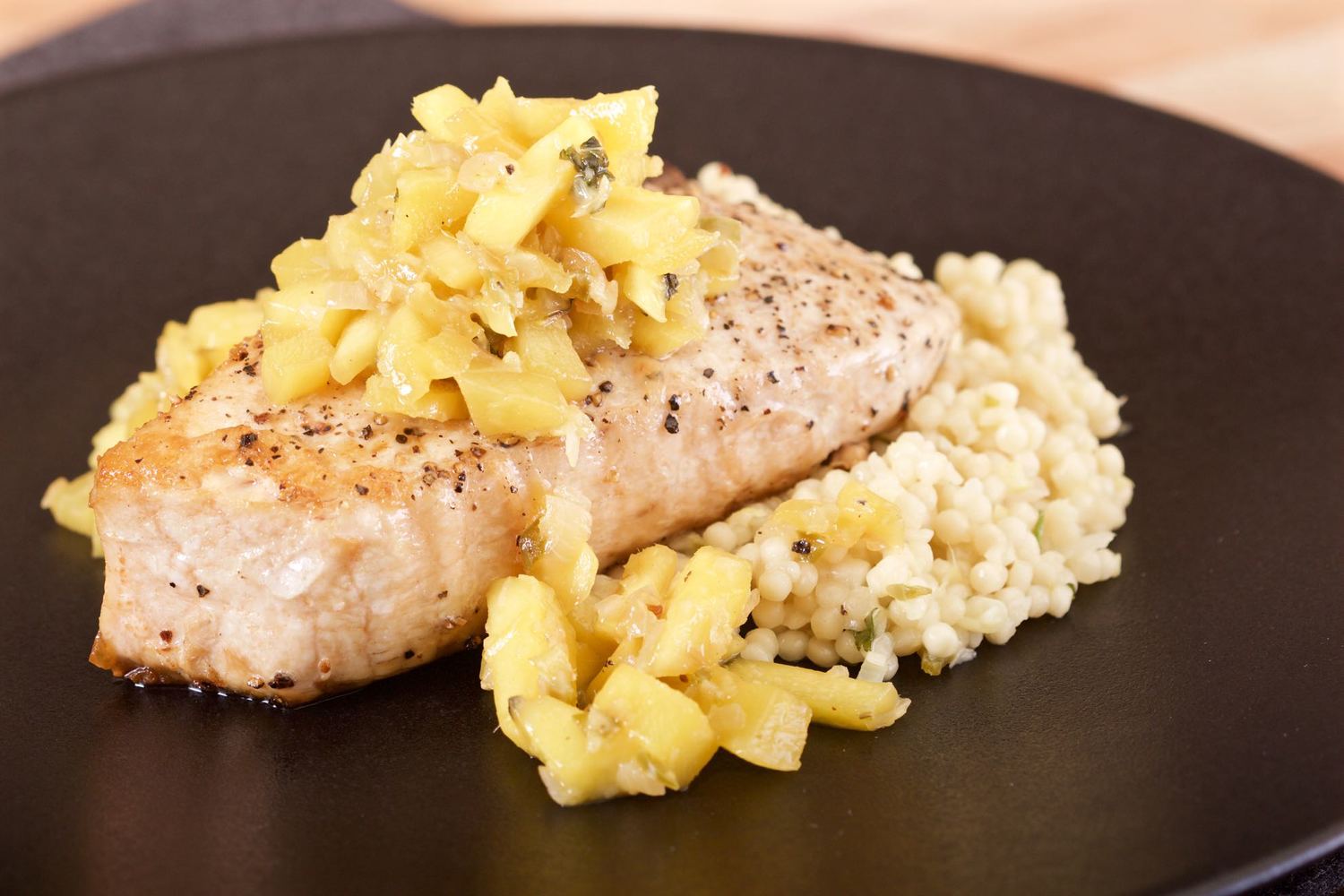
Edible portions
- The loins, fillets, and the whole fish can be eaten. [3]
Description of meat
- There are three different types of flesh from different parts of the fish, each a different color (orange, pink, and deep red) and all turns white when cooked. [1,2,3]
- Has a firm, fatty texture with large flakes and rich, creamy flavor. [1,2]
Culinary uses
- Usually obtained fresh as loins, fillets, or whole [3]
- Often baked, fried, grilled, sautéed, steamed, smoked, or eaten raw. [2,5]
- Loins specifically are good for grilling, sautéing, or broiling [2]
- Top loin meat works well for making sashimi [2]
- Visit Land of Noms for a pan seared Opah with lemongrass and couscous recipe. [14]
- For a classic Hawaiian poke recipe, visit Chef's Table. [17]
Nutritional information
-
This fish provides a substantial source of omega-3s, niacin, B6 and B12 vitamins, phosphorus, and selenium. [2]
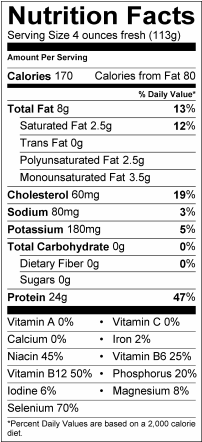
-
Has a low sodium content. [2]
-
Nutritional table for Opah. [2]
Toxicity report
- Has a moderately high mercury content, so limited consumption is recommended for young children, nursing mothers and pregnant women. [13]
Seasonal availability
- Opah is available year-round. [2]
- Peak availability is typically around April-August. [2]
References
[1] NOAA Fisheries. Opah. Web. https://www.fisheries.noaa.gov/species/opah/ Accessed 18 Jan 2019.
[2] Hawaii-Seafood. Opah. Web. https://www.hawaii-seafood.org/wild-hawaii-fish/moonfish-opah/ Accessed 18 Jan 2019.
[3] Science Magazine. Lampris guttatus. Web. https://doi.org/10.1126/science.aaa8902. Accessed 20 Jan 2019.
[4] Protect The Oceans. Opah Fish or Moonfish. Web. https://protecttheoceans.org/wordpress/?p=2134 Accessed 21 Jan 2019.
[5] ThisFish. Opah (Moonfish). Web. https://thisfish.info/fishery/species/opah-moonfish/. Accessed 4 March 2019
[6] Status of the Fisheries Reports for CA. Web. https://nrm.dfg.ca.gov/FileHandler.ashx?DocumentID=34309. Accessed 15 Feb 2019.
[7] Federal Fishery Web. https://www.fishwatch.gov/profiles/opah. Accessed 15 Jan 2019.
[8] Pacific Fishery Management Council. n.d. Highly migratory species. Web. https://www.pcouncil.org/managed_fishery/highly-migratory-species/. Accessed 3 September 2020.
[9] NOAA Fisheries West Coast. 2012. flickr. Opah. Digital image. Web. https://www.flickr.com/photos/nmfs_northwest/17188703717/. Accessed 10 February 2021.
[10] Fish Base. Opah Lampris guttatus. Web. https://www.fishbase.se/summary/Lampris-guttatus.html. Accessed 3 April 2019.
[11] Tuna Harbor Dockside Market. 2020. Digital image. Web. https://www.facebook.com/thdocksidemarket/photos/4076037532425499. Accessed 10 February 2021.
[12] Saltwater Sportsman. Web. https://www.saltwatersportsman.com/species/fish-species/opah. Accessed 9 April 2019.
[13] Hawaii State Department of Health. A Local Guide to Eating Fish Safely. Web. https://health.hawaii.gov/wic/files/2013/05/mercury.pdf. Accessed 4 March 2019
[14] Land of Noms. 2015. Pan Seared Opah with Lemongrass Couscous. Web. http://www.landofnoms.com/noms/pan-seared-opah-with-lemongrass-couscous. Accessed 4 March 2019.
[15] Marine Life Management Act. n.d. California Department of Fish and Wildlife. Web. https://wildlife.ca.gov/Conservation/Marine/MLMA. Accessed 24 August 2020.
[16] Overview of the Pelagic Fisheries and Ecosystems Program. n.d. California Department of Fish and Wildlife. Web. https://wildlife.ca.gov/Conservation/Marine/Pelagic#52132542-overview. Accessed 9 December 2020.
[17] Paxton, S. Chef's Table By: Home Brew Chef. 2016. Classic Poke. Web. https://chefs-table.homebrewchef.com/recipes-archive/classic-poke/. Accessed 15 January 2021.
